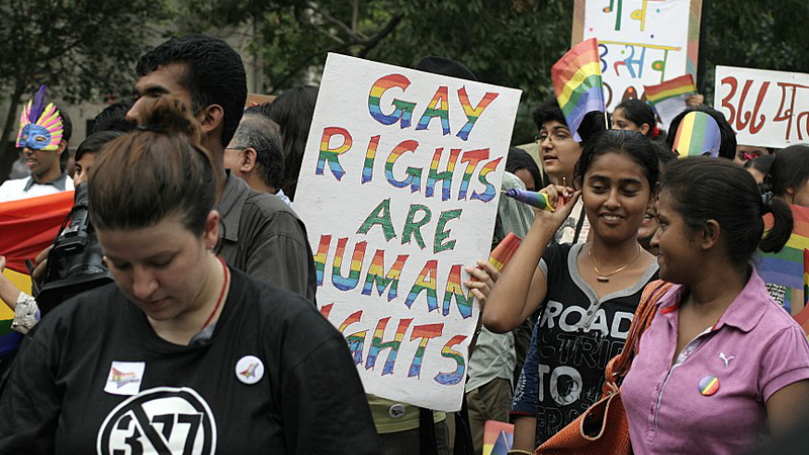
In looking back on the history of what we today call the struggle for Gay Rights or Gay Liberation, the Communist and Socialist contributions to that struggle are deserving of both recognition and analysis. And the role of militancy itself also needs to be remembered, both by gay and straight people, if the gains of recent decades are not to be reversed. This is especially true today when LBGT people are the targets of both Nazi style attacks on their persons and community centers but also campaigns by reactionary politicians to erase all work dealing with them from school curricula and libraries
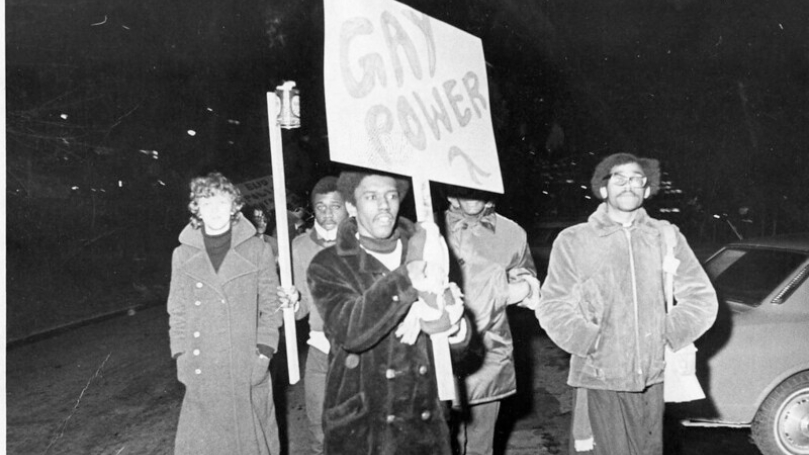
Unlike others on the left, The CPUSA learned from its mistakes in the post WWII and has long taken the “correct”position on gay liberation/gay rights, not the position that benefits the right and the forces of reaction and repression. The point that the best elements of the Socialist/Communist movement has always made, starting with Marx in his call for communists to fight the battles for political democracy and against national chauvinism and war, is that the economic struggles and the social struggles can’t be separated mechanically, but must be fought for together, just as Black activists and Communists contended that you couldn’t fight a war against Hitler and what he represented while you supported Jim Crow and racism at home. The exploiting classes use, to quote Richard Nixon, the social issues as “wedge issues,” to divide white and black, male and female, gay and straight working people, which makes the development of trade unions, the restoration of progressive taxation, the raising of the minimum wage to 15 dollars, a national full employment policy, very difficult to achieve. Empathy is a key concept. Just as the Communist movement contended in the past that it was the responsibility of white Communists and white workers especially to stand up and challenge expressions of racism in working class circles, and later of male workers to stand up and challenge sexism in working class circles, it should be the responsibility of straight workers, male and female, to challenge homophobia in working class circles and wherever it raises it ugly head.
The Communist movement and gay rights
Gays have been involved in the struggles for the emancipation of the working class as revolutionary agitators, labor organizers, and partisans of socialist, communist and anarchist movements since the days of the Paris Commune and the First International, when for many those three categories were interchangeable.
Scholars of gay history have pointed to appeals made to both Karl Marx and Friedrich Engels to bring the oppression of homosexuals into the larger struggle for the emancipation of the working class. Here, to be frank, one finds from Marx a refusal to entertain the subject, and from Engels open hostility to the individuals involved.
Gays involved in organizing trade unions and other activities for the socialist movement in Germany and other countries found themselves targeted by the police and abandoned by their unions and parties. This is certainly no record to be proud of on any level, but it must be understood in context. The socialist movement, struggling to achieve elemental political democracy in a world where the working class did not even have the right to vote outside of a few countries, found itself divided on many questions, including how to respond to colonialism, the question of women’s rights, and the rights of oppressed national minorities.
The first significant support that gay civil rights received in world history came at the end of the 1890s from the flagship Marxist socialist party of the Second International, the German Social Democratic Party (SPD).
Conservative socialists, including those invoking Marx’s ideas, often contended, as they did on the issue of women’s rights and even the question of oppressed minorities, that these were not “class issues,” maintaining that they would detract from the organization of the working class and retard the movement for socialism. After the Soviet Revolution, the communist movement broke with these narrow approaches to the questions of racism, oppressed nationalities, women’s rights, etc.
However, in regard to all these questions, there was a long history of anti-sexism, anti-racism, and anti-colonialism on which to build in order to fight both right-wing opportunists and doctrinaire leftists in the socialist movement.
The arguments made by conservative socialists and some doctrinaire leftists against active participation in the struggles against racism and sexism were always tactical ones. Women, colonial peoples, and oppressed national minorities were not seen, as homosexuals were, as “unnatural” and unacceptable, or at best a medical or social problem to be tolerated as long as they remained hidden. In fact the very existence of homosexuals was condemned by organized religion and laws passed to criminalize people for their sexual orientation.
It is no exaggeration to say that homosexuals faced, and in parts of the world still face, a level of societal oppression similar to German fascism’s oppression of people of Jewish extraction. The claim is still being made that the very existence of homosexuals threatens society, that they are both diseased and the carriers of disease, and must either be quarantined or, as in the case of Hitler’s “final solution,” exterminated. Since homosexuals cannot be “found” from the information on birth certificates or from circumcisions, etc., in the way the Hitler fascists hunted down people whom they defined as Jews, gay people had the “protection” of wearing social masks or disguises, leading double lives, and either repressing their sexual orientation or living an underground or closeted existence. It was no accident that the Hitler regime (even though its enemies noted the closeted gay men in its ranks) added the pink triangle to the yellow star as they placed homosexuals in concentration camps along with other political and “racial” enemies. Homosexuals in the fascist ranks were as valuable to the defense of other homosexuals as high-profile gay Republicans in the U.S. are today to gay rights. Nor was it an accident that Magnus Hirschfeld, the leading exponent of ending the oppression of homosexuals under the law in Weimar Germany was among the Nazis first targets when they seized power in 1933.
While Marxists and Communists have always rejected the “great man theory” of history in principle, there are two individuals whose activism most directly helped to shape the development of the Gay Rights/Gay Liberation movement globally in the 20th century. The first, Magnus Hirschfeld, in pre-Hitler Germany, was a socialist. The second, Harry Hay, in the post WWII period in the US, was a communist with both a small and a capital “C.”
Magnus Hirschfeld: liberal, humanist, and socialist
Magnus Hirschfeld, who was born in 1868, came from a very different background than Harry Hay. A medical doctor and the son of a prominent physician, Hirschfeld was well-to-do, traveled widely, and wrote for prestigious medical journals. In 1897, he founded the Scientific Humanitarian Committee, which sought to repeal that section of the German penal code which criminalized homosexuality. The committee was essentially an elite group of figures in the arts, sciences, and professions who gave decriminalization a degree of respectability.
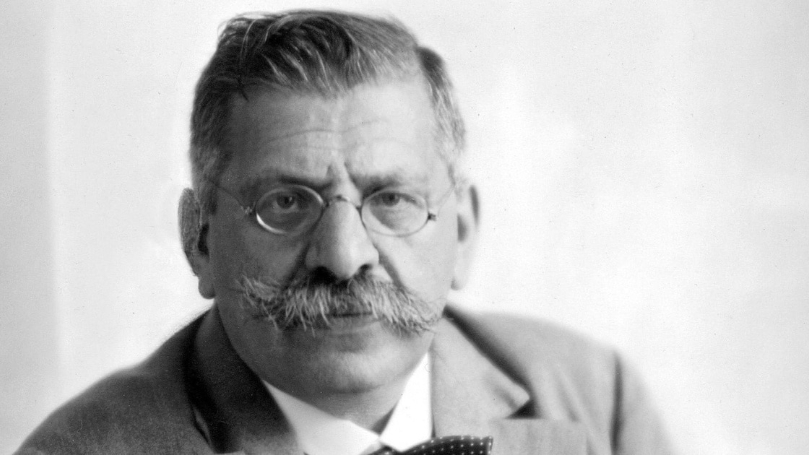
Dr. Magnus Hirschfeld
Legislation to that effect was put forward in the German Reichstag at the very end of the 19th century, its support coming mostly from delegates of the German Social Democratic Party. Over the years, Hirschfeld, working first within the imperial and later the Weimar political system, wrote extensively and campaigned relentlessly for the decriminalization of homosexuality, arguing that science and reason demanded such policies.
Leading figures in the Marxist Socialist movement, including Marx’s compatriot August Bebel, Karl Kautsky, the leading Marxist theorist at that time, and the leading revisionist, Edward Bernstein, signed petitions for Hirschfeld’s committee, as well as other prominent people such as Albert Einstein, Thomas Mann, Heinrich Mann, Kathe Kollwitz, and Martin Buber. The legislation advanced in the Weimar era but was never enacted.
After WWI, Hirschfeld organized international conferences calling for the repeal of anti-homosexual legislation throughout the world, as well as a World League for Sexual Reform. In Germany he also organized and directed the Institute for Sexual Research and sought to connect the repeal of anti-homosexual legislation with the scientific study of human sexuality, as well as a broader reform of laws regulating human sexuality.
When the Nazis took power in 1933, they ransacked the headquarters of the Institute and made a public show of burning its books and pamphlets. Hirschfeld went into exile in France, where he died of a heart attack in 1935, still hoping that the Nazis could somehow be driven from power in Germany and the struggle for the elimination of repressive laws against human sexuality revived.[1]
Harry Hay: Communist militant, organizer, and early champion of Gay Liberation
Harry Hay was born in England in 1912, on the day, as he liked to remember, that the Titanic sank. Eventually his family settled in southern California, where Harry began to work in Los Angeles theatrical and movie productions in the early 1930s. He became aware of his sexual orientation at a fairly early age, and as a young man he was influenced by the writings of Edward Carpenter, a British homosexual and socialist, who saw gay people as an oppressed group with their own distinct culture and needs.
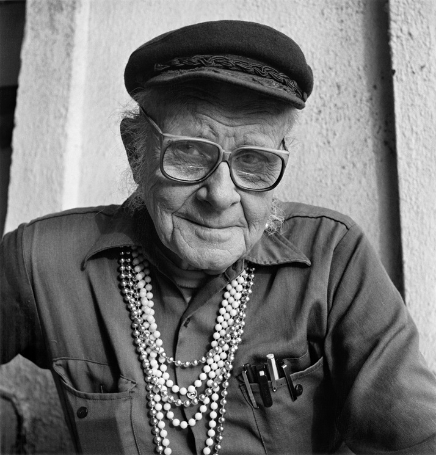
Harry Hay
It was in Los Angeles in the early 1930s that Harry Hay met Will Geer, a gay actor, singer, and CPUSA activist, who was to become his lover. After joining Geer in doing support work for the ILWU-led San Francisco General Strike (1934), Hay followed Geer into the CPUSA and used his substantial talents as an organizer and his theatricality and humor to become a very effective CPUSA activist. Never seeking power for himself, Harry Hay was an example of the best kind of Communist cadre.
Hay was always open and philosophical about his erotic orientation, seeing it as both part of himself and a handicap to his larger work. He once told a psychiatrist that he found party meetings very dull because there were no “flower-faced Marxist boys to stand with me in the class struggle against oppression.” In 1938, he married Anita Platky, a Communist Party comrade. Their marriage was to last for 13 years and they had two children.
However, as the marriage went on, he came to reject the view of some of his comrades, including his therapist, that he must struggle against his homoerotic feelings, and in effect, make himself unhappy and repressed in order to live a “happy normal life.” Hay had come to accept his erotic orientation as something positive for him, a basic part of his civil and human rights, long before others dared to profess such views.
Meanwhile Harry Hay became a sort of Jimmy Higgins jack-of-all-trades on the California left, teaching at the California Labor School, and playing a significant role in the 1949 election of Ed Roybal, the first Latino elected to the Los Angeles City Council following WWII. Hay also organized “Bachelors for Wallace” in California, the first gay political group to involve itself in an American election, and his actions helped carry a precinct with a large gay population for Henry Wallace and the Progressive Party in the 1948 presidential election. He also raised the issue of Progressive Party support for a sexual privacy law in exchange for gay votes — perhaps the first time in US history that anyone had defined gays as a voting constituency with specific political needs.
Now we come to a poignant and in its own way tragic moment in American political history. At a time when the CPUSA was facing unprecedented political persecution on all fronts and losing tens of thousands of members, Harry Hay was a dedicated and committed party member, an activist in the best sense. [2]
He had reached a point, however, where he saw his work as first and foremost the struggle for gay liberation, which, as a Communist, he identified with the struggles of oppressed people throughout the world. With the defeat of fascism and the collapse of colonialism, he saw a new opening and a huge increase in the possibility of gay liberation. The Communist Party leadership in California respected his great contributions to the people’s struggle, but because of the dominant ideology across the political spectrum, the CPUSA, like all other groups, would not accept open homosexuals as party members. But Hay was now committed to being both a Communist activist, as he had been for the greater part of two decades, and an openly homosexual activist.
The argument that party functionaries passively accepted at the time was essentially the argument used to purge homosexual men from the federal government — that gays would be subject to blackmail and thus could be used to betray the Party. Faced with this, Hay went to the Party leadership and asked to be expelled — which they at first refused. Finally, Hay worked out a compromise with the California Party leadership, in which he was expelled as a “security risk” and not for being a homosexual. (In the larger society, during the depths of the Cold War, being fired from a job as a “security risk” was not something Communists were ashamed of.)[3]
Hay’s situation was in many ways more complicated than that of activists like Paul Robeson, who faced relentless persecution by cold warriors and racists in the US, or of Alexandra Kollontai who had earlier faced persecution in Czarist Russia, because they combined the struggle for socialism with the interdependent, but not subservient, issue of the liberation of people of color and women. In a tragicomic expression of this entire situation, the CPUSA issued a formal statement praising Harry Hay and gave him a farewell testimonial dinner in California, perhaps the only testimonial dinner of its kind ever held. In their testimonial statement, the Party proclaimed Harry Hay to be “a lifelong friend of the people,” certainly a bizarre act regarding someone the Party had just expelled.
In his thinking, Hay had built upon his earlier reading of Edward Carpenter to see, in the context of the global liberation struggles then sweeping the world, gay men and lesbians as an oppressed people whose double lives were barriers to their emancipation. Gay men and lesbians were compelled to live a closeted existence, facing possible prison sentences, certain blacklisting, and likely isolation. Hay was also influenced by the widely publicized Kinsey report (1948), which contended that homoerotic sentiments and behavior could be found in large numbers of people. The authors extrapolated a total figure as high as ten-percent of the human race, based on their analysis of the report’s findings. Hay had come to see what the Kinsey report sought to show, but which most people everywhere, with or without power, did not see — that human sexuality was something far more complex than was generally realized at the time, and that confronting these complexities instead of fearing them was necessary for the liberation of all people.
Hay reluctantly left the CPUSA because the Party leadership was not yet ready to grasp the possibilities and significance of a homosexual liberation movement. His situation reminds us in some ways of that of W.E.B. Du Bois who left the Socialist Party on the eve of World War I and debated the Communists for several decades before joining the Communist Party near the end of his life. With the defeat of fascism and the collapse of colonialism, Du Bois saw that the world was rapidly changing and that the future of liberation struggles by the “non-white” peoples of the world now rested with the Communist movement. Harry Hay saw in the postwar world the possibility of applying what he had learned as a CPUSA activist. Hay took action in the autumn of 1950, as both the Korean War and Senator Joseph McCarthy raged on, and the right denounced “crooks, communists, and queers” in and outside of government. With gay friends and comrades he now formed the Mattachine Society. The name itself has an interesting history — one deeply connected with those who have had to hide their true identity. Hay took the name from a medieval French secret society of unmarried men who wore masks as part of their secret rituals. The French took the name mattachine from the Italian mattachino, court jesters who could speak the truth to kings only when they wore masks, much as gays [and other minorities] were compelled to disguise and deprecate themselves when addressing those who refused to see them as they were.
Although Hay’s commitment to gay organizing had led him to leave the CPUSA by a kind of mutual consent, he and his comrades continued to use CPUSA organizing and educational techniques to develop the Mattachine Society into an organization representative of gay people and a vehicle for achieving the goal of gay liberation.
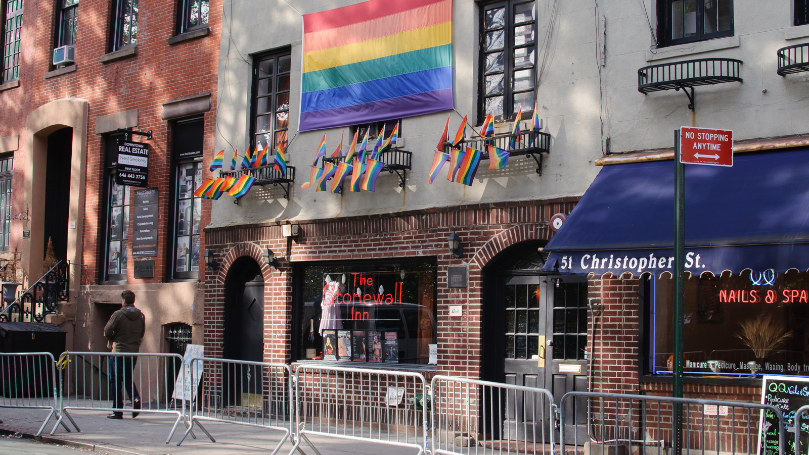
However, Harry Hay and the Mattachine Society’s Communist and left leadership found themselves, by the mid-1950s, the victims of the kind of internal red-baiting that had devastated trade unions and all kinds of mass people’s organizations during the Cold War period. Gays who sought acceptance within the existing system – the opposite of everything Harry and his comrades stood for – took over the Mattachine Society and turned it into an organization of proper men in suits and ties, holding forums with homophobes and centrists and engaging in very tame actions to seek greater “toleration” for gays. When the mass gay liberation movement took shape after the Stonewall Gay Ghetto Riot of 1969, the Mattachine Society was considered by many gay activists to be an artifact with establishment pretensions, something like a conservative AFL business union to labor militants, or the National Urban League to Black militants. Its early crucial history was largely unknown.
Harry Hay never stopped fighting for Gay Liberation, using the Leninist tactics and strategies that he had first learned in the 1930s — the building of effective organizations as part of a broad, inclusive Peoples’ Front to advance the struggle. Called before the House Un-American Activities Committee (HUAC) in 1955 (one should remember that homophobia was cultivated by McCarthyites as a companion to their generic red-baiting), he stood up to the committee, treating them with the contempt they richly deserved, although he felt bitter that it was difficult to get Left attorneys to represent him because of his open homosexuality.
Fearful perhaps of making him into a martyr (McCarthy had been censured the previous year and McCarthyism in its crudest forms was in decline), HUAC declined to cite him for contempt and send him to prison, which it had previously done with the Hollywood Ten and others.In the 1960s, Harry joined Women Strike for Peace, an activist group including both former and ongoing CPUSA members, and sought to develop coalitions with the emerging gay rights, antiwar, and women’s rights movements. He also became an activist and supporter of Native Americans in their struggle to reclaim their cultural heritage. Hay also began to share his life with John Burnside in 1963, developing with John a family life that would last for the rest of his days. In an age when the word “role model” became a national cliché, Harry and John became for many an example of the kind of committed and happy relationship that gay people could forge even in a homophobic environment.
At the same time, Hay became an active critic of the mass Gay Rights Movement which emerged in the 1970s, particularly its penchant for involving itself in narrow-interest group politics and supporting traditional Democratic Party politicians in what was a sort of political protection racket. In that sense, he continued to be the militant left communist he had been since the early 1930s. In 1979, Hay became the organizer of Radical Faeries, which sought to revive the broad humanism of the original Mattachine Society, with a commitment to complete sexual freedom and diversity as inseparable. Harry Hay continued to be politically active in the last decades of his long life, serving as a leading figure in California in the Lavender Caucus of Jesse Jackson’s Rainbow Coalition in the 1980s, practicing the pluralism that liberals in the larger society only preached in what was still its most tabooed area — erotic expression.
To his last day, Harry Hay, who passed away in 2002, fought against the hatred that ruling circles fomented against gay men and lesbians (as they do against all other oppressed minority groups in order to divide and conquer), and rejected the self-hatred, which, for gays, is perhaps more intense than for any other oppressed group. He would fight in an underground but never live in a closet. [4]
Harry Hay is today rightly praised by a wide variety of gay rights organizations as a leading pioneer in the struggle for Gay Liberation. It is important to remember him as a Communist who both preached and practiced the ideological militancy and tactical flexibility that have produced great victories for the working class and oppressed minorities in the past, and will do so again in the future.
It is also important to understand that the Communist Party of the United States, his party, eventually caught up to him in its commitment to gay rights and its complete rejection of backward conceptions about the role of gays in politics and society. Unfortunately, the Communist Party of the Russian Federation, which describes itself as the successor of the Communist Party of the Soviet Union, has gone back in time in supporting the reactionary homophobic policies of the anti-Communist and anti-Soviet Putin government, which it claims to oppose.
June 28 marks the 55th anniversary of the start of the Stonewall Riot at the Stonewall Bar in Greenwich Village, which was in essence a “gay ghetto uprising.” In its aftermath an open Gay Rights/Gay Liberation Movement came into existence which has been a significant force in the larger People’s Movement for the last 35 years. The theory and practice of both Magnus Hirschfeld and Harry Hay live on in the movement for gay civil rights. Hirschfeld has received many posthumous honors in European countries for his contribution, but Harry Hay deserves a few honors here in this country.
While most people identify Gay Liberation with the New Left of the 1960s, its history, like that of the civil rights, women’s rights, and anti-war movements of the time, cannot be separated from the role of the CPUSA in helping to bring it about. In the 1950s and 1960s, Communist Party activists in the civil rights, women’s rights, and peace movements often found themselves working in the closet, hiding their identities because of the dangers of external and internal repression. In the case of the postwar Gay Liberation Movement, Harry Hay, a militant communist, in effect organized and led that movement at the height of cold war reaction, viewing the movement for gay rights as part of a larger global struggle for the liberation of all oppressed people. Hay may sometimes have fought wearing a mask, but he would never retreat to the closet or engage in the self-segregation offered to oppressed groups by their oppressors “for their own protection.” As a Communist, he also looked at group pride in terms of a larger social solidarity, recognizing that such solidarity was the only way to institute and consolidate progressive social change.
[1] Unfortunately, the most comprehensive major studies of Hirschfeld are not in English. However, I would recommend the following works: In Blasius and Phelan, eds., We Are Everywhere: A Historical Sourcebook of Gay and Lesbian Politics (New York, 1997), the chapter on “The Emergence of a Gay And Lesbian Political Culture in Germany” is valuable, as is James Steakley’s The Homosexual Emancipation Movement in Germany (New York, 1975). On the Weimar Republic and the debate over human sexuality, see Atina Grossman’s The German Movement for Birth Control and Abortion Reform, 1920-1950 (Oxford, 1995). On the Nazi oppression of gay men and lesbians, see especially Gunther Grau, ed., Hidden Holocaust: Gay and Lesbian Persecution in Germany, 1933-1945 (New York, 1995). On Hirschfeld himself, see Charlotte Wolf, Magnus Hirschfeld: A Portrait of a Pioneer in Sexology (London, 1986).
[2] There is abundant scholarship connecting cold war anti-Communist ideology and policy with cold war homophobia. For example, see Barbara Epstein, “Anti-Communism, Homophobia, and the Construction of Masculinity in the Post-War U.S.” in Lori Lyn Boyle, ed., Cold War Culture and Society( 2001). Epstein uses concepts derived from contemporary feminist and gender studies to analyze the relationship between the two. Elizabeth Collin’s dissertation, “Red Baiting Public Women: Gender, Loyalty and Red Scare Politics,” is available on the Internet There is also a fine academic study of the issue and the development of U.S. Vietnam War policy, Robert D. Dean, Imperial Brotherhood: Gender and the Making of Cold War Foreign Policy (Amherst, 2001) Dean, after examining the “male bonding” rituals of the graduates of prep schools, ivy league colleges, and exclusive fraternities and clubs from whom foreign policy makers from both parties came, looks at the anti-Communist and anti-Gay purges in the state department and foreign service and their effects on all policy makers, both the purge victims and those who continued in their positions.Dean shows the development of a culture of fear, in which all peace policies were compared not only to the Munich appeasement policy and internal Communist subversion, but to all weakness, tender mindedness, effeminacy, and homosexuality as well. For many policy-makers in the Kennedy and Johnson administrations, these fears muted criticisms of the disastrous Vietnam escalation even as evidence grew that it was disastrous.]
[3] On Hay himself, see Harry Hay and Will Roscoe, eds., Radically Gay: Gay Liberation in the Words of its Founder (Boston, 1996). Stuart Timmons, The Trouble With Harry (1990 is the major biography and a very valuable detailed study which deals forthrightly with his CPUSA background, unlike earlier works which lapsed into anti-Communism even when they sought to portray Harry positively. There is also Jack Walsh’s award winning documentary film, “Hope Along the Wind: The Life of Harry Hay”(2002). Finally, as a general work, I would recommend that readers consult John D’Emilio, Sexual Politics, Sexual Communities: The Making of a Homosexual Minority in the United States, 1940-1970.
Images: Gay rights are Human rights by Ramesh Lalwani (CC BY-NC 2.0 Attribution-NonCommercial 2.0 Generic Deed); Gay Power (public domain); Dr. Magnus Hirschfield (Creative Commons); Harry Hay (Free to share and use); Stonewall Inn, West Village by Scarlet Sappho (CC BY-SA 2.0 Attribution-ShareAlike 2.0 Generic Deed);


 Join Now
Join Now